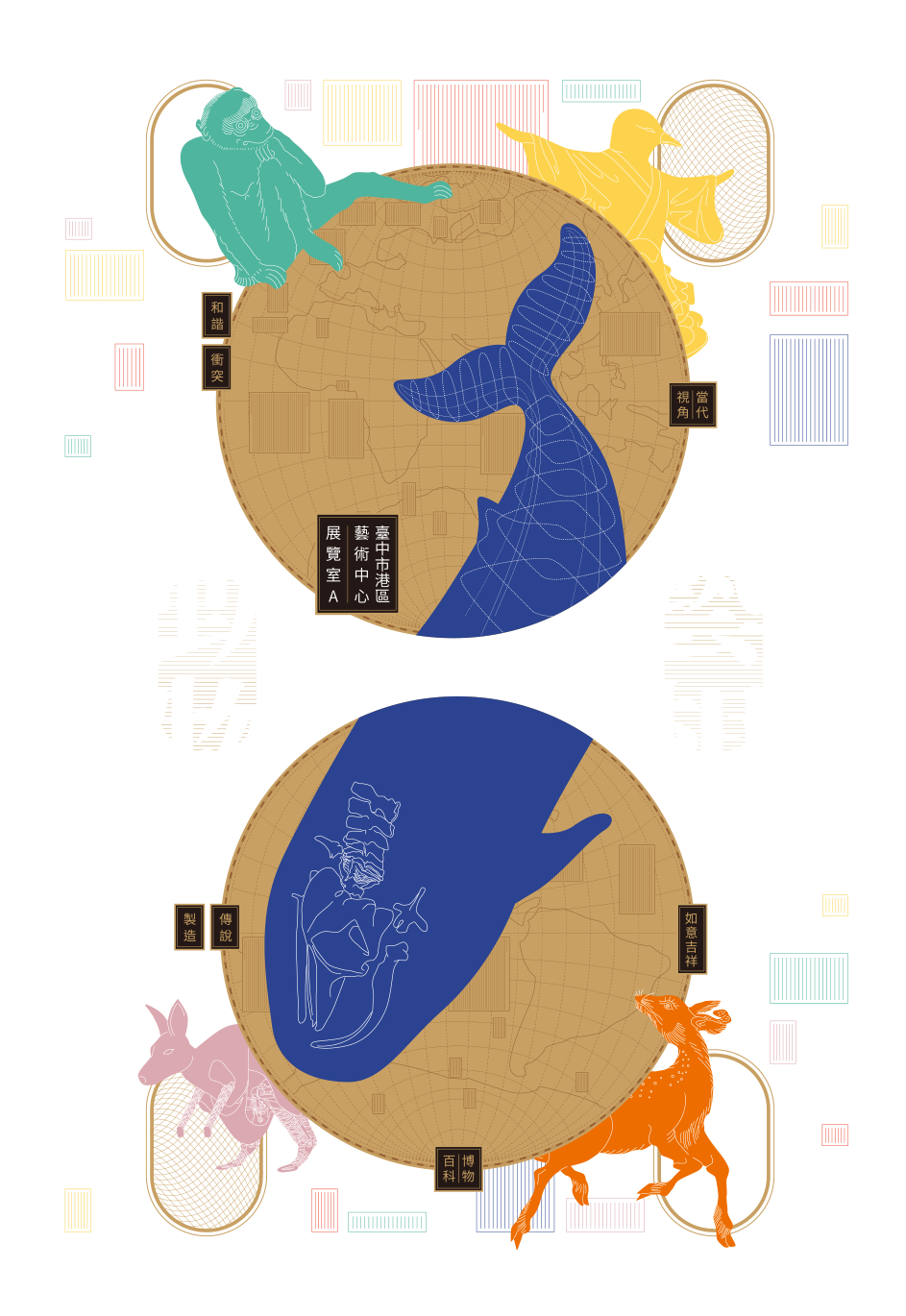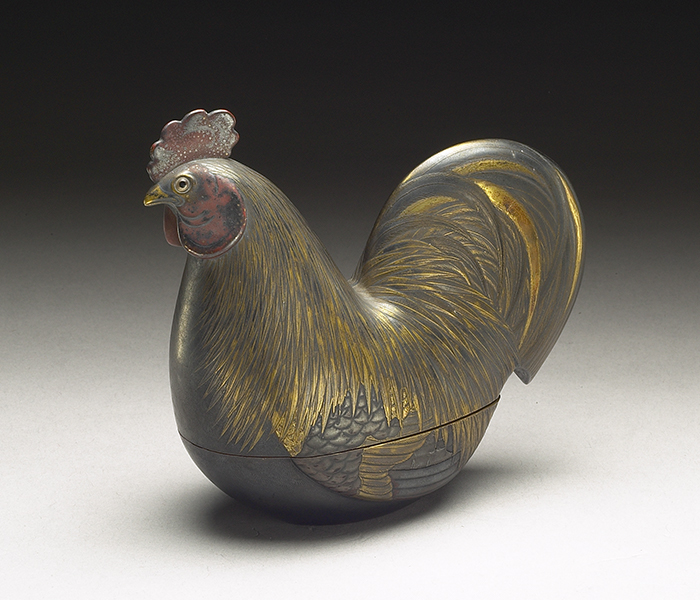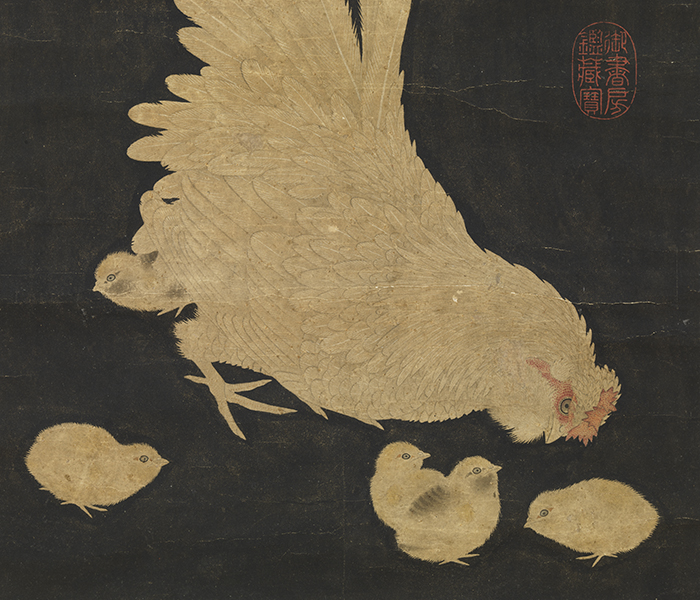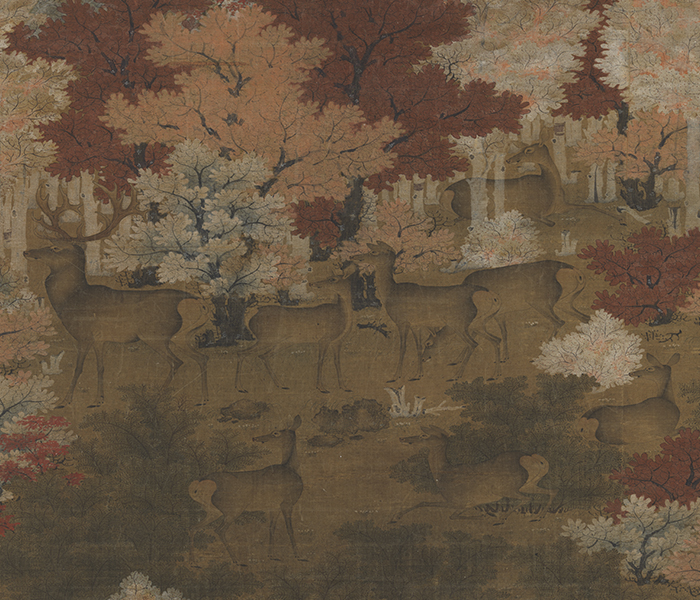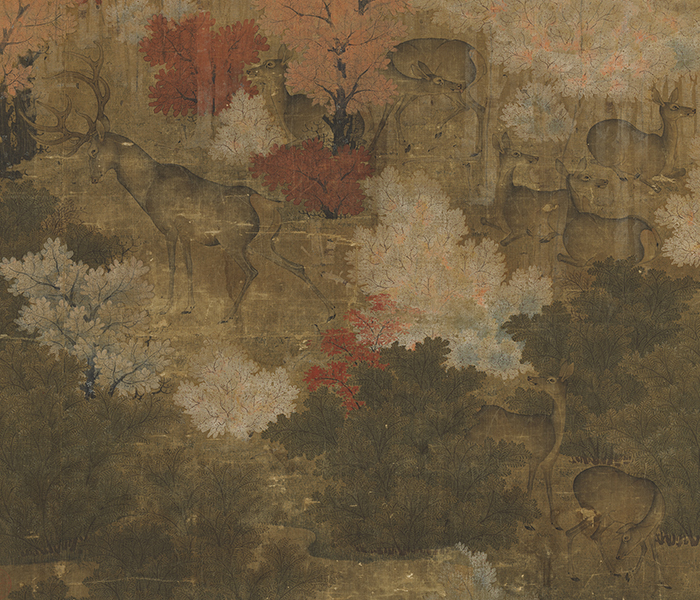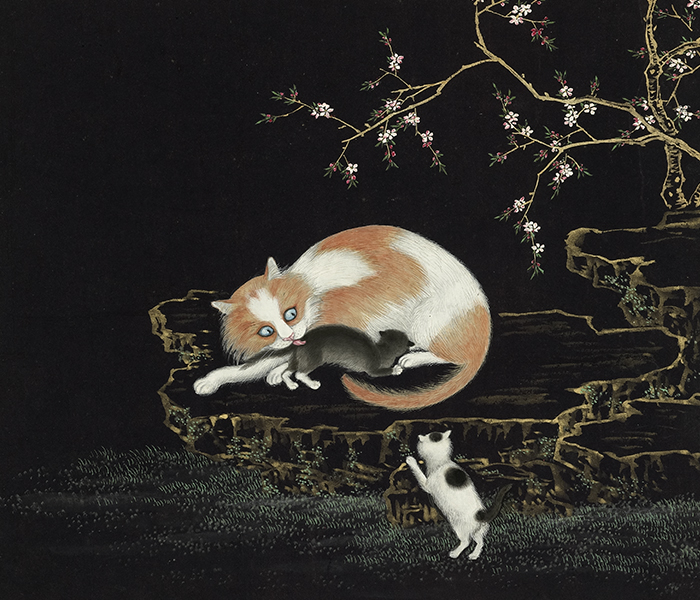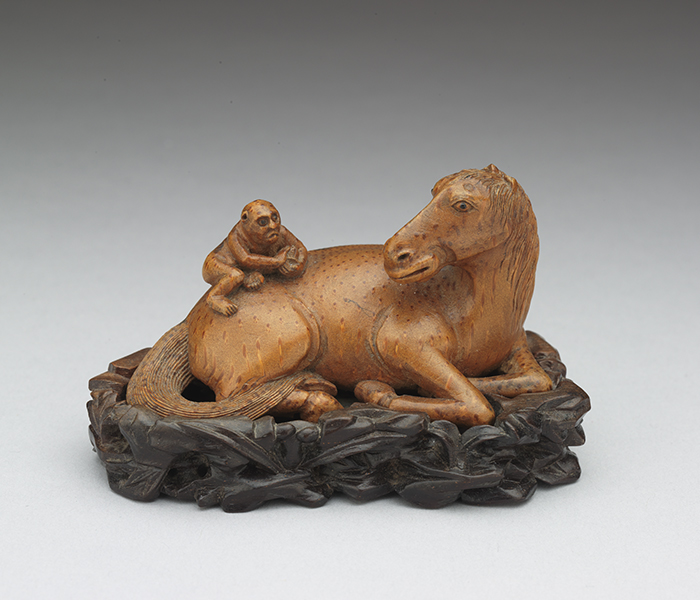
Projection mapping "Prosperity Multiplies a Hundredfold"
- City University of Hong Kong
- 2018
The vase of flowers in the paper scroll painting Prosperity Multiplies a Hundredfold has been enlarged and 3D-printed as a white bas relief. The bats painted on that vase are now projection-mapped onto this bas relief. When a viewer approaches the vase, these projected bats become animated and appear to fly excitedly around, after which they settle again into their original painted positions.

Animal-themed artefacts
- City University of Hong Kong
- 2018
- Object movies & 3D interactive objects
There are now new ways to create digital facsimiles of art objects, and these have enabled the curator to create displays that interactively present invaluable animal-related artefacts from the collection of the National Palace Museum for this exhibition. "Photogrammetry" enables objects to be digitized in 3D and then manipulated in virtual reality, while "videogrammetry" allows artefacts to be shown as "object movies" that can be rotated and viewed from all sides.
Painted Lacquer Box in the Shape of a Rooster with accompanying Xiangong Ivory Boat, 18th century Qing Dynasty
- Qing dynasty (1644-1911)
- 12.8 cm (L) x 5.8 cm (W) x 10.5 cm (H)
This rooster-shaped lacquer box was likely the work of Japanese craftsmen. Each feather on the rooster is adorned with gold leaf, and the edges are also etched with gold. The layers of feathers overlap naturally, and emanate a smooth sheen as if specially combed and arranged. The rooster itself has a rotund body with a red lacquer comb etched with gold, and its bright eyes give it a distinctly lifelike air. The miniature dragon boat within the rooster-shaped box was the work of Southern ivory craftsmen affiliated with the Inner Court, and was created by piecing together several small pieces of polished ivory. The prow of the boat is in the form of an erect dragon’s head, and the cabin is in the design of a three-story pavilion. The doors and windows of the pavilion-shaped cabin can be opened and closed at will. The engaging rooster-shaped box and the intricate dragon boat complement each other well, and together comprise a fascinating example of exquisite craftsmanship.
Hen and Chicks
- Song dynasty (960-1279), Anonymous
- Hanging scroll, ink and colors on paper, 41.9cm (H) x 33cm (W)
- Facsimile
This painting depicts a hen with five chicks searching for food on the ground. The fluffy beautiful feathers of the hen are snow-white in color, and she shows the watchful eye of maternal affection. The chicks stick close to their protective mother and exhibit the qualities of tenderness and frailty. The background is completely filled with pitch-black ink, making the chickens stand out even more clearly. The hen-and-chicks subject not only alludes to the expression "may your five sons succeed in the civil service examination", but also portrays the simple joy of rustic life – a hen taking her chicks out to look for food. The artist here pays great attention to observing and portraying forms, and the notion of "sketching from life" is quite evident. Although this painting bears neither seal nor signature of the artist, it probably comes from an academy master at the court.
Herd of Deer in a Maple Grove
- Five dynasties (907-979), Anonymous
- Hanging scroll, ink and colors on silk, 118.5cm (H) x 64.6cm (W)
- Facsimile
This painting with no artist's signature or seal depicts a herd of deer roaming leisurely in a dense and colorful grove of maple trees in autumn. This work closely matches the size and style of Herd of Deer in an Autumnal Grove (2.1), another painting in the National Palace Museum on display. Both were probably once part of the same set. The heads of the deers here face in the same direction, as if having just heard something in the forest. Their bodies are rendered in delicate shades of color washes to give them a sense of volume. The trees also have been done in the "boneless" manner of washes with no outlines, making for a riot of color and form. In the dense forest, deer can also be seen behind tree trunks. This style differs somewhat from traditional Chinese painting methods found in the painting genres of birds-and-flowers and animals, and it may be related to a foreign manner practiced by the Khitan under the Liao dynasty.
Herd of Deer in an Autumnal Grove
- Five dynasties (907-979), Anonymous
- Hanging scroll, ink and colors on silk, 118.4cm (H) x 63.8cm (W)
- Facsimile
This work depicts a maple forest in autumn in which a herd of deer is frolicking and resting. The painting method here differs somewhat from traditional Chinese techniques. With its strongly decorative quality, it seems to have been created under the influence of a foreign art style. The deer have been done completely in light ink and washes. The outlines and veins of the tree leaves were first delicately outlined, washes of green applied, then mineral white filled in, and finally more light washes of color added. The colors do not conceal the ink, creating brilliant, semi-transparent richness with their lively hues. The painting may be related to a foreign manner practiced by the Khitan under the Liao dynasty (907-1125).
Cats and Butterflies in Springtime
- Qing dynasty (1644-1911), Shen Zhenlin
- Album leaf, ink and colors with gold on paper, 28.5cm (H) x 32.9cm (W)
- Facsimile
Shen Zhenlin (artist name Fengchi), a native of Wuxian (modern Suzhou, Jiangsu) served the Qing court Painting Academy in the Xianfeng (1851-1861) and Tongzhi reigns (1861-1874). He specialized in figures and portraits but also excelled at sketching birds and flowers from life as well as landscapes. Famous for his painting, Empress Dowager Cixi (1835-1908) awarded him a plaque that she personally inscribed: "To a miraculous hand that transmits the spirit".
In ancient times, people used the homonym of "cat" and "butterfly" for "octogenarian" and "septuagenarian" to express birthday wishes for a venerated elder. This work is composed of two albums rendered with gold and other mineral-based pigments on black paper to depict cats and butterflies playing and roaming among flowers of the seasons. The rich and exquisite paintings, with colors set off against a dark background, are especially lively, adorable and eye-catching.
Bamboo Root Carving of Monkey on Horse
- Anonymous, Qing dynasty (1644-1911)
- 6.7 cm(L)x 3.5 cm(W)
This full form carving of a bamboo root depicts a semi-reclining horse, with head turned back to gaze upon its rear haunches, upon which a small monkey holding a peach sits. This carving signifies good wishes for immediate granting of a peerage, based on a homonym between horseback (ma shang) and immediate (ma shang), and peerage (hou) and monkey (hou). Though this work is small in size, extensive care was taken in fashioning the forms, expressions, and muscular lines of the animals depicted. This work was originally included in a treasure box as a curio and plaything.

The Golden Calf
- The Golden Calf
- 1994/2018
In this pioneering 1994 augmented reality artwork, the viewer handholds a video screen that shows a computer-generated golden calf standing on top of a physical pedestal situated in the exhibition space. Moving the screen around the pedestal allows the viewer to examine this virtual golden calf from all angles. While the biblical golden calf is an idolatrous object of animal worship, the golden calf in this artwork can be interpreted as the veneration of technology whose immateriality is both compelling and uncanny.
In the 2018 version of the Golden Calf, four tiny cameras embedded in the pedestal enables the live video image of the exhibition environment and its inhabitants to be mirrored onto the golden skin of the calf.
